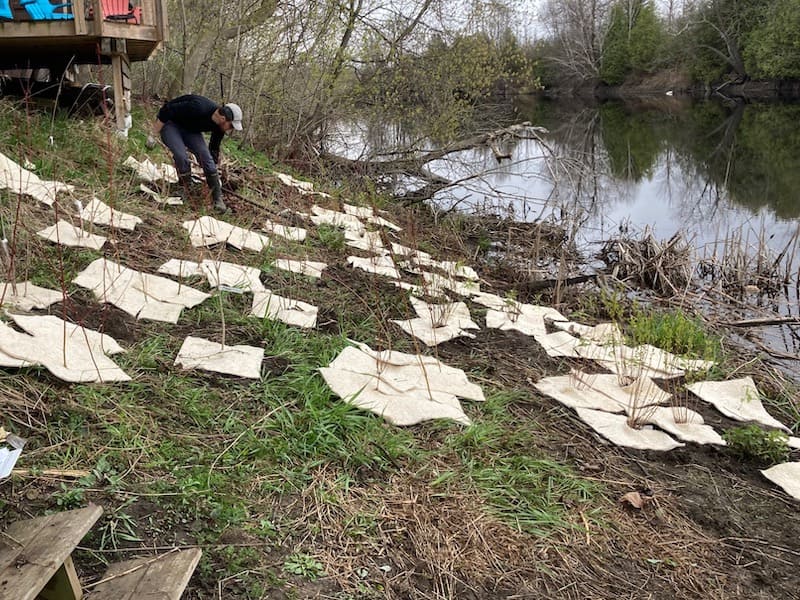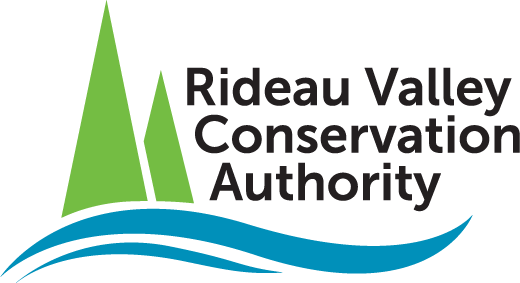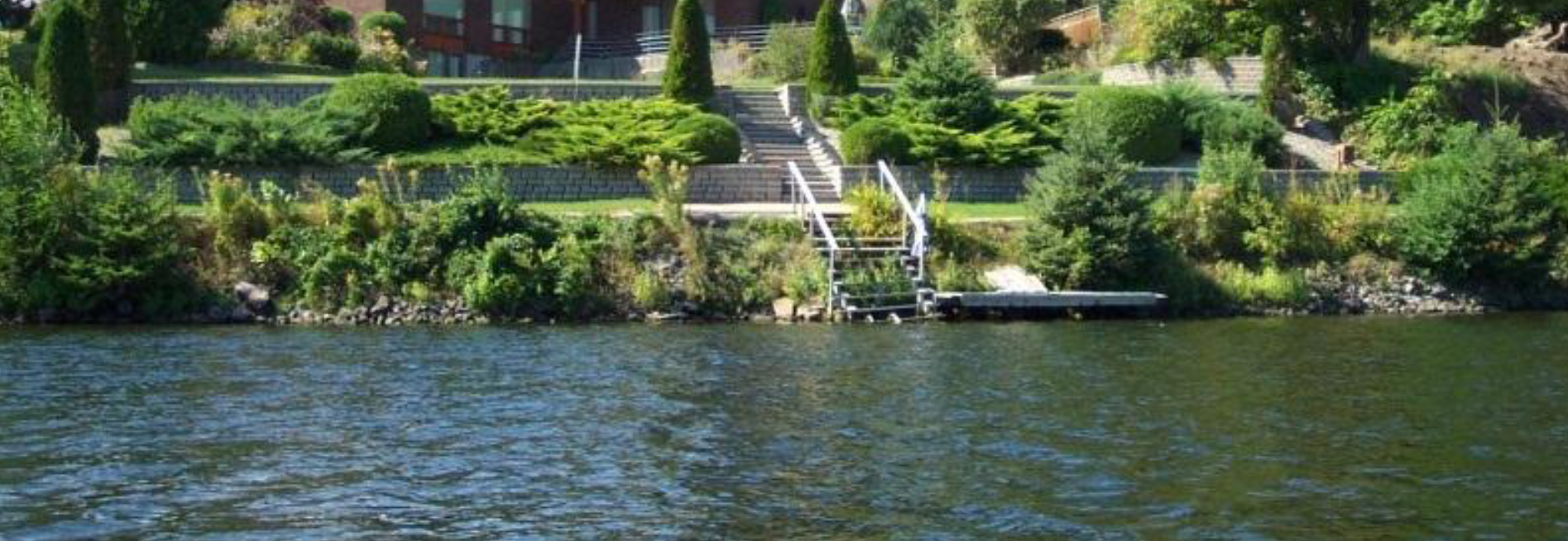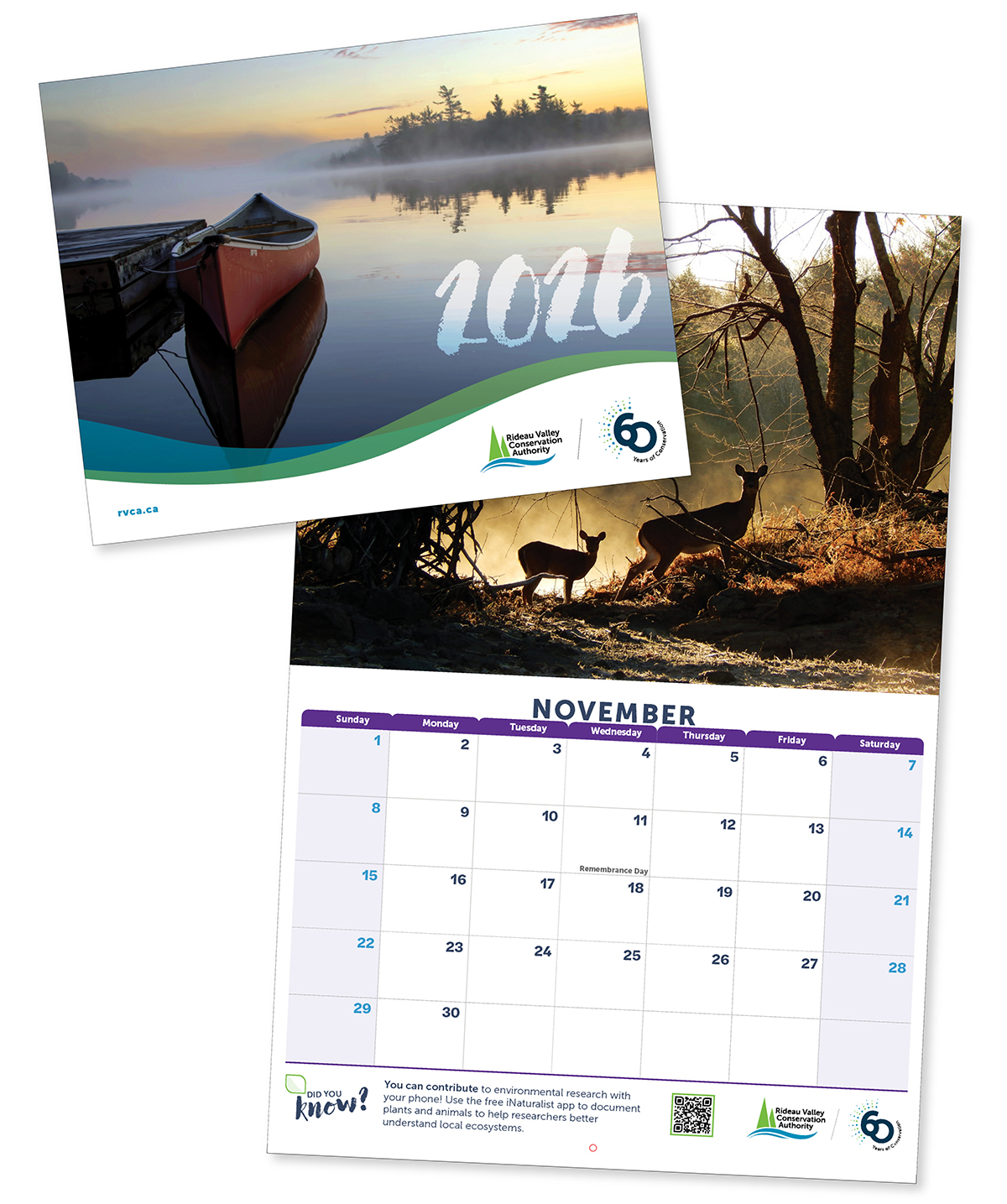Every shoreline is unique and requires different approaches to naturalization. Current and desired land use, existing conditions, soil type, availability of sunlight and moisture, and naturalization goals all play a significant role in selecting the appropriate naturalization methods. Some methods may include:
Creating a “no-mow” zone near the shoreline and allowing vegetation to re-establish on its own.
Active planting of native trees, shrubs, grasses, wildflowers and/or aquatic plants in the buffer area.
Placing or allowing the accumulation of woody debris along shoreline.
Removal or “softening” of existing hard structures like retaining walls, gabion baskets and rip rap.
Utilizing various bioengineering methods such as coir logs, live cuttings, and brush mattresses to control or reduce erosion.
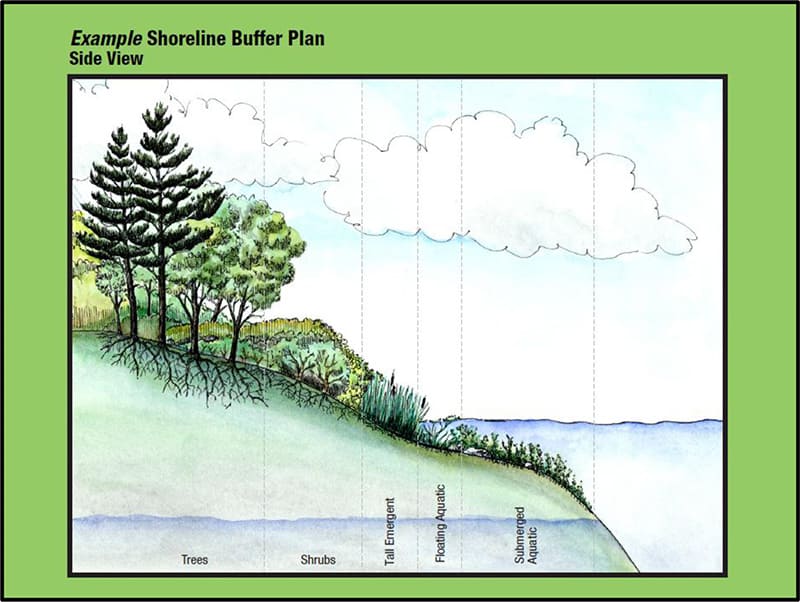
1. Assess Your Property
- Think about how you use your shoreline. How do you access it? Where would you like to maintain views/sight lines?
- Find your high water mark and the location of your property lines.
- Determine site conditions such as soil type, moisture and compaction, drainage patterns and availability of sunlight.
- Does your property have excessive erosion? Problems with your septic system? Planning to install a new dock? You may want to address these issues before planting your shoreline.
Soil Types
Sand - Coarse texture, gritty to the touch, particles can be seen by the human eye, good drainage
Silt - Fine texture, smooth to the touch when wet, particles not visible without microscope
Clay - Very fine texture, sticky and plastic-like when wet, poor drainage
Loam - A combination of sand, silt and clay particles, desirable soil type for many plants
Organic - Dark in colour, high in organic material, wet, common in wetland or seasonally flooded areas
2. Develop a Planting Plan
- Map out where you want to plant and determine how many plants you will need.
- In general, shrubs should be planted about 1 metre apart, and trees should be no closer than 2.4 metres (remember to consider mature plant height and width when spacing plants).
- Place low growing shrubs, wildflowers and grasses in areas where you want to maintain views. Placing larger trees along the edges of your property helps delineate property boundaries, maintains privacy and doesn’t block views of your shoreline.

3. Select Plant Species
- Select plants that are appropriate for your site conditions (soil, sunlight, etc.).
- Choose native plant species grown from local seed sources as they are best suited to survive local climate conditions and provide the greatest benefits to wildlife (exercise caution when purchasing native species from commercial nurseries as plants that appear native may actually be similar exotic species or cultivars—purchase plants from a native plant nursery whenever possible to ensure authenticity).
- Choose flowering or fruit bearing plants for maximum wildlife benefits.
- Look to see what is growing locally—there is a good chance that these plants will do well on your property too.
- Decide what size/type of plant you want to use:
- Bare Root-bare root seedlings have exposed roots, so they need to be planted while the plant is dormant (early spring). Bare root plants are inexpensive and easy to transport. They must be properly handled, stored and cared for to reduce transplant shock and ensure good survival rates.
- Potted- Potted plants come in a variety of sizes. They are more expensive, can be difficult to transport in large quantities, can have good survival rates if cared for properly and can be planted at any time during the growing season.
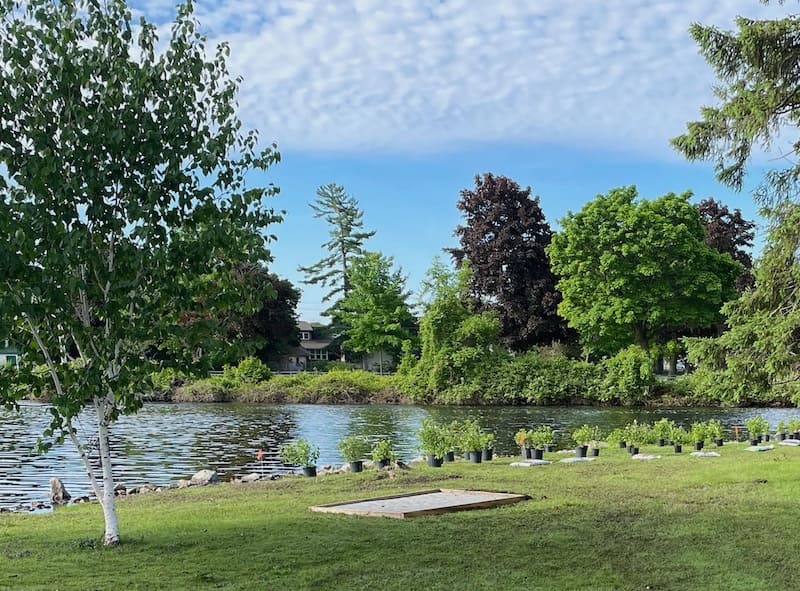
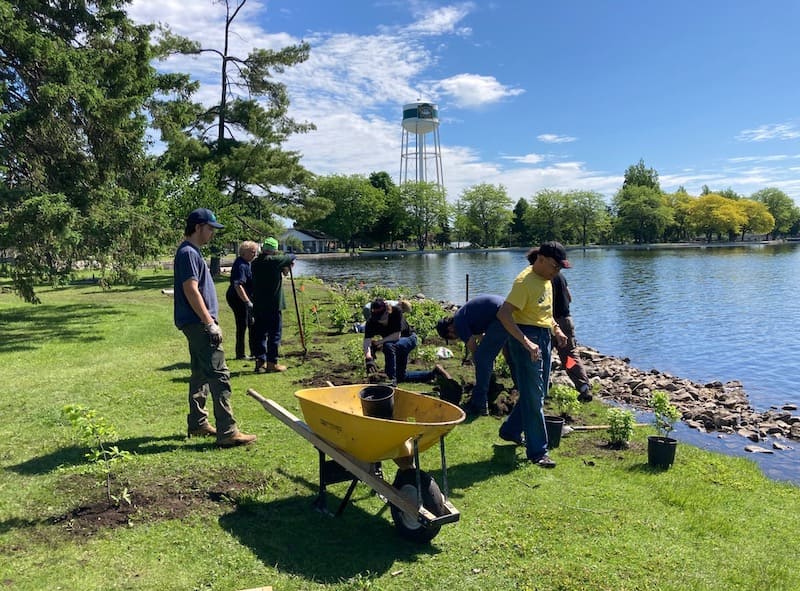
4. Plant
- Prepare you site as needed. Examples of site preparation include mowing of tall grass, soil amendment, and removal of sod, ornamental plants or invasive species. Often, plants can be planted directly into existing ground conditions.
- Keep plants moist and shaded until ready for planting. Ensure that proper handling and planting techniques are used.
- Water plants after planting.
- Remember to take lots of before and after photos!
Potted Planting
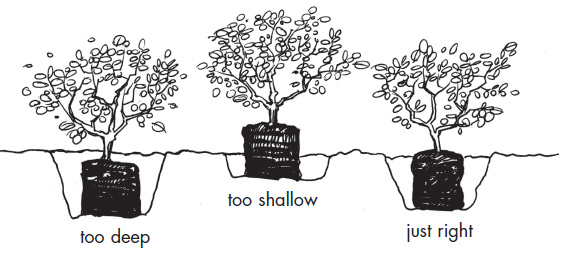
Diagram: On the Living Edge: Your Handbook for Waterfront Living
Bare Root Planting

5. Maintenance & Aftercare
- Mulches improve growing conditions and promote faster growing by supressing competitive weeds and grasses and by keeping in moisture. They also make it easier to locate small seedlings in overgrown areas. Different types of mulches include:
- Coir mats: Coir mats are portable, biodegradable, mats made from coconut fibre.
- Loose mulches: Loose mulches include woodchips, bark and straw. While affordable and useful in some circumstances, loose mulch is easily eroded and should be limited in flood-prone shoreline areas. Always choose non-dyed mulch.
- Others: Cardboard, wet newspapers, old carpet, biodegradable plastic brush sheets.
- Tree guards should be installed around deciduous trees to prevent mice and vole damage.
- New plants will need to be watered depending on site conditions and recent weather.
- Weeding, pruning and trimming around plants may be required to reduce competition.
- Replace dead plants as necessary.
- Do not fertilize.
